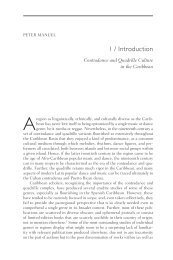Session Handout-Active Learning Principles and Strategies
Session Handout-Active Learning Principles and Strategies
Session Handout-Active Learning Principles and Strategies
You also want an ePaper? Increase the reach of your titles
YUMPU automatically turns print PDFs into web optimized ePapers that Google loves.
4. Opinion<br />
spectrum<br />
What is it? •Pose a question or issue on which there will likely be varied responses<br />
•Establish poles on a spectrum (e.g., Agree/Disagree) •Students move themselves to<br />
physically represent their “stance” on the issue • Ask students to articulate their view or an<br />
opposing viewpoint<br />
Why is it worth doing? •Gets students out of their seats—can be a good break in a lecture<br />
•Can visually see differences in opinions <strong>and</strong> how opinions shift over time<br />
5. Jigsaw What is it? •Assign different readings to different students (e.g., some students read<br />
section 1, others section 2, etc.) •Students who read the same reading meet to discuss<br />
<strong>and</strong> solidify their underst<strong>and</strong>ing •Then, students are paired with others who have read<br />
different materials •Students teach each other the content<br />
Why is it worth doing? •In teaching others, students underst<strong>and</strong> <strong>and</strong> retain more<br />
•Exposes students to a greater amount of material while limiting the amount of reading for<br />
each individual student<br />
6. Quick whip What is it? •Each member of the class quickly shares a comment, idea or question.<br />
Why is it worth doing? •Everyone participates •Lots of ideas are shared quickly<br />
7. Exit slips What is it? •In the closing minutes of class, students respond to a prompt or question (e.g.,<br />
What is the stickiest/most unclear point? The main idea for today is…)<br />
Why is it worth doing? •Provides feedback on students’ underst<strong>and</strong>ing, questions, etc.<br />
•Provides opportunities for students to consolidate what was learned •If graded, exit slips<br />
provide an incentive to not leave early<br />
Also discussed during this session: •Student-created case studies •Mind maps •<strong>Learning</strong> journals •Fish-bowl<br />
discussion •10 Suggestions to improve a lecture •10 Steps when facilitating experiential activities •10 Time<br />
savers when active learning takes time •10 Interventions when students get out of h<strong>and</strong><br />
Many of these tips <strong>and</strong> activities have been taken directly or indirectly from:<br />
Silberman, M. (1996). <strong>Active</strong> learning: 101 <strong>Strategies</strong> to teach any subject. Boston, MA: Allyn & Bacon.<br />
For workshop materials, please email me at: bradley.bergey@temple.edu<br />
New Teaching Assistantship Orientation | Teaching & <strong>Learning</strong> Center | Bradley Bergey | p. 2
















